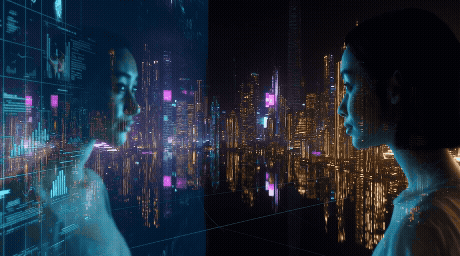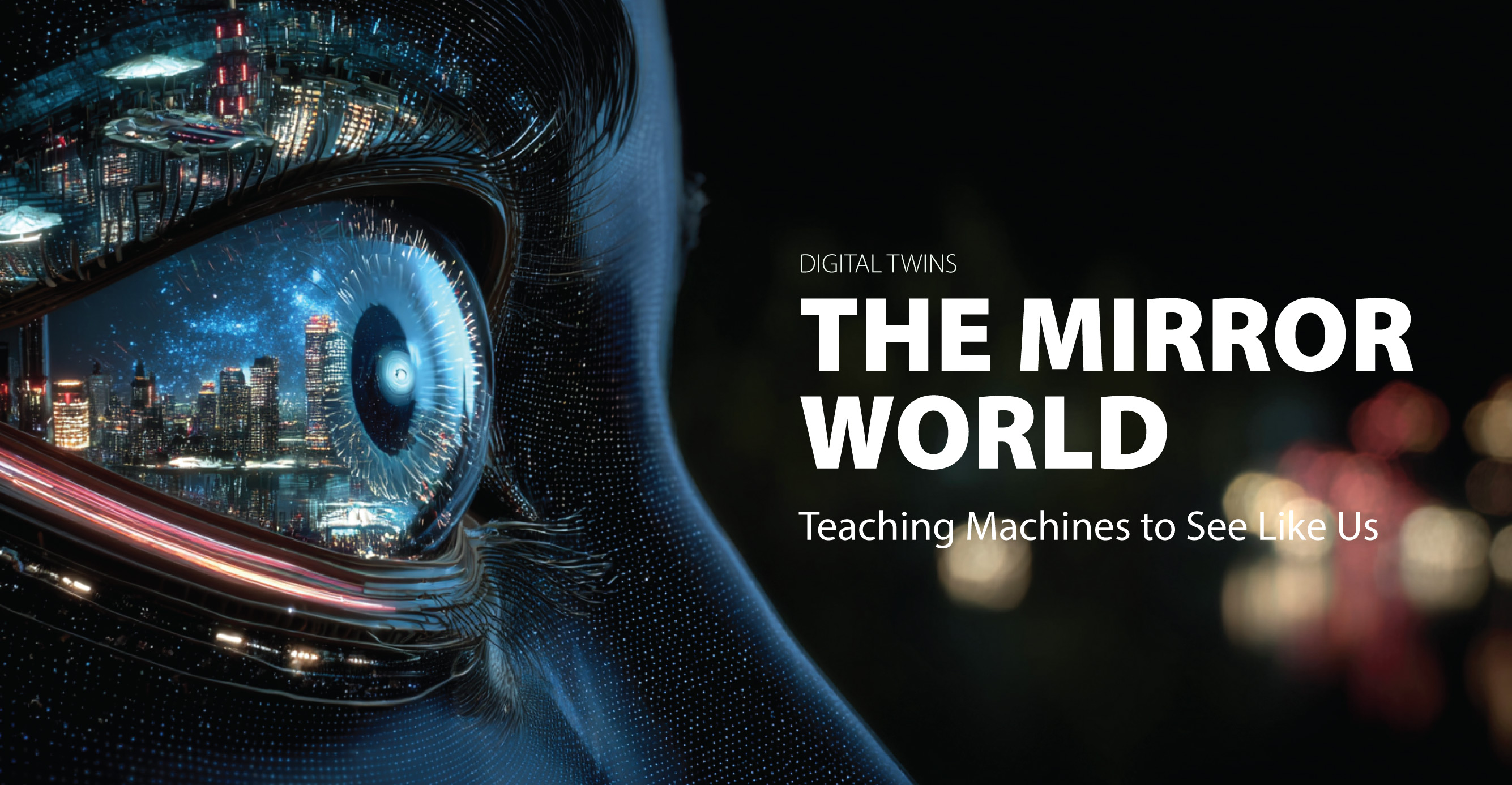
Stand at a city intersection and watch a red Toyota glide by. You see it clearly: the same car, whether it’s far off, a small speck in the distance, or right in front of you, its details sharp. You know it’s one car, not because of its size or shape changing with perspective, but because your brain weaves together a thousand tiny clues: motion, color, context, into a single, living truth. This is how we humans see the world: not as fragments, but as a story that makes sense.
Now imagine a camera watching that same Toyota. To it, the car isn’t a car at all. It’s just pixels: hundreds of blurry dots when it’s far, a hundred of thousands sharp ones when it’s close. To the camera, these are different things, not the same object moving through space. This gap between our intuitive understanding and a machine’s raw, fragmented view is where the story of digital twins begins.
‘Digital Twin’ is a humans attempt to make machines see the world as we, people, do, to build a mirror of reality that doesn’t just capture pixels but understands them, stitching together data from sensors: cameras, RADARs, GPS, audio, and other sensors, into a coherent reflection of the world. It’s a journey to teach machines not just to see and recognize, but to know and understand that red Toyota as one car, to track it across a city, to rewind time and show what happened minutes ago.
For me, this tale of creation was inspired by Academic M. I. Schlesinger, whom I can call a teacher, a towering figure in pattern recognition, envisioned machines that could see the world.

In this article, I’ll follow this vision through four stages: the Myth, where the dream is born; the Toy, where we play with crude imitations; the Model, where machines start to grasp reality’s rules; and the Product, where digital twins become living mirrors that see beyond what we can. Along the way, we’ll explore how we’re teaching machines to see not just with pixels, but with purpose.
Every breakthrough starts with a story, a spark of imagination that dares to ask, “What if?”
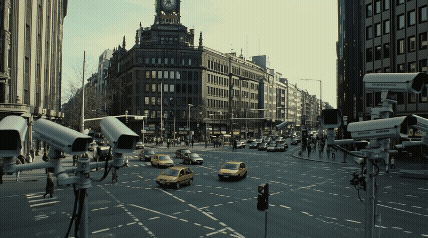
Long before digital twins were a tool for smart cities and production lines, they lived in the pages of science fiction and the flickering frames of film.
In Robert A. Heinlein’s The Moon is a Harsh Mistress, a sentient computer dreams of freedom, seeing the world with human-like understanding.
Philip K. Dick’s Do Androids Dream of Electric Sheep? imagines machines so lifelike they blur the line with reality. Films like Westworld (1973), and The Thirteenth Floor (1999) conjure worlds where machines mirror reality, not just as images but as living systems with purpose. These stories spun a myth: machines that could see the world, not as scattered pixels but as a coherent whole, like a red Toyota moving through a bustling city.
In the real world, this myth took its first steps with early digital cameras in the late 20th century. These simple devices captured low-resolution images of streets and cars, barely more than pixelated shadows. Yet they carried a dream—that one day, these snapshots could become a true mirror of reality, a foundation for systems that manage traffic or plan cities. This myth isn’t about perfection; it’s a spark of belief, like a child hearing a fairy tale, urging us to build something real from imagination.
From the myth, we move into the playful, messy world of toys like children carving wooden airplanes that wobble but never fly. Engineers take the idea of a digital twin and begin experimenting. They set up cameras and sensors to watch over a city intersection. At this point, engineers try to make the video stream more than just a series of images.
They add labels like “car”, ‘Toyota’, or “red” to help the system describe what it sees in a more meaningful way. It becomes a live feed of images with some added understanding. But it’s still a long way from real comprehension. This stage is all about trying to make sense of the world by attaching sensors to streetlights and hoping that the data will start to tell a story.
This stage is chaotic but vital, like a child stacking blocks to test what holds. In our industry, think of early traffic cameras feeding raw video to basic algorithms, tagging cars or pedestrians with crude labels that struggle to keep up with a bustling street. These toys are rough drafts of a mirror world, laying the groundwork for machines to learn the rules of reality.
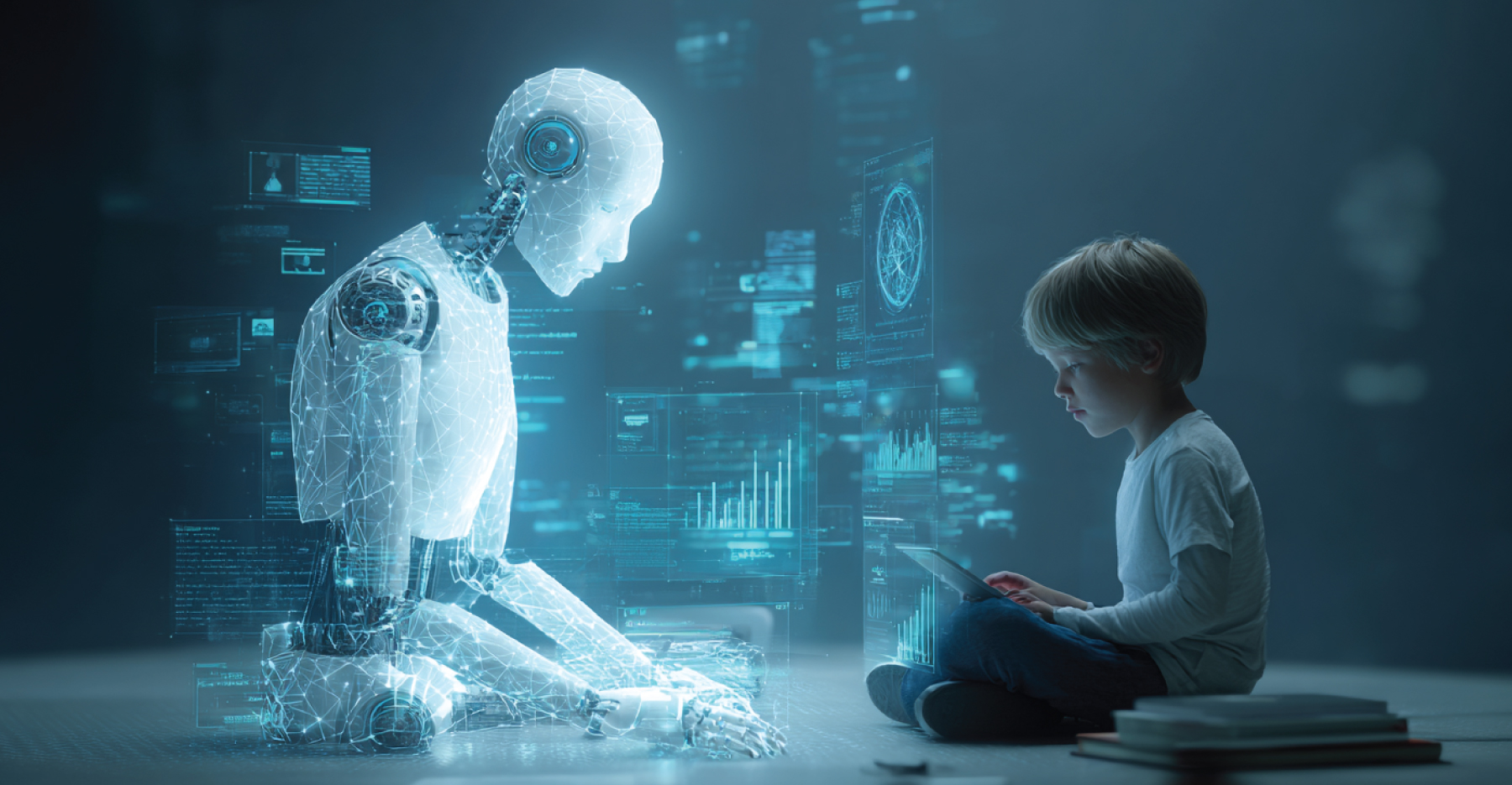
Now the toys evolve into models — prototypes that start to take flight, even if they wobble. Here, the digital twin begins to understand, learning that the hundred pixels on one camera and the thousands on another are the same red Toyota, grasping the concept of a “car” across space and time. This is where the human analogy shines: we humans are the ultimate digital twins, our brains weaving signals from eyes and ears into a vivid world. A digital machines tries to mimic this, not by copying pixels but by interpreting them, like the predictive systems in Minority Report that piece together clues to see the future.
The magic of this stage lies in data modeling, turning measured data (video, bounding boxes, car models) into computed data (3D scene depth, distances, speeds). These aren’t directly seen by cameras; they’re calculated using rules humans teach, like a teacher showing a child that shadows hide a deeper truth. This partnership between human and system is key: engineers act as guides, teaching machines to see beyond raw data by assigning labels: tagging a blob as a “car” or “pedestrian”, a process that dominates the industry at this stage. But labelling is an easy part, engineers go further and introduce “hidden parameters,” the unspoken rules we take for granted. The machine learns that a car doesn’t vanish, it might be hidden behind another vehicle. By combining video with object detection and tracking, more advanced systems can compute a car’s speed or distance, revealing the 3D structure of an intersection. This is the seed of a digital twin, where measured fragments become a coherent mirror through human-guided rules, helping manage traffic or optimize urban flow. This stage sets the foundation for a mirror that doesn’t just reflect, it reveals.
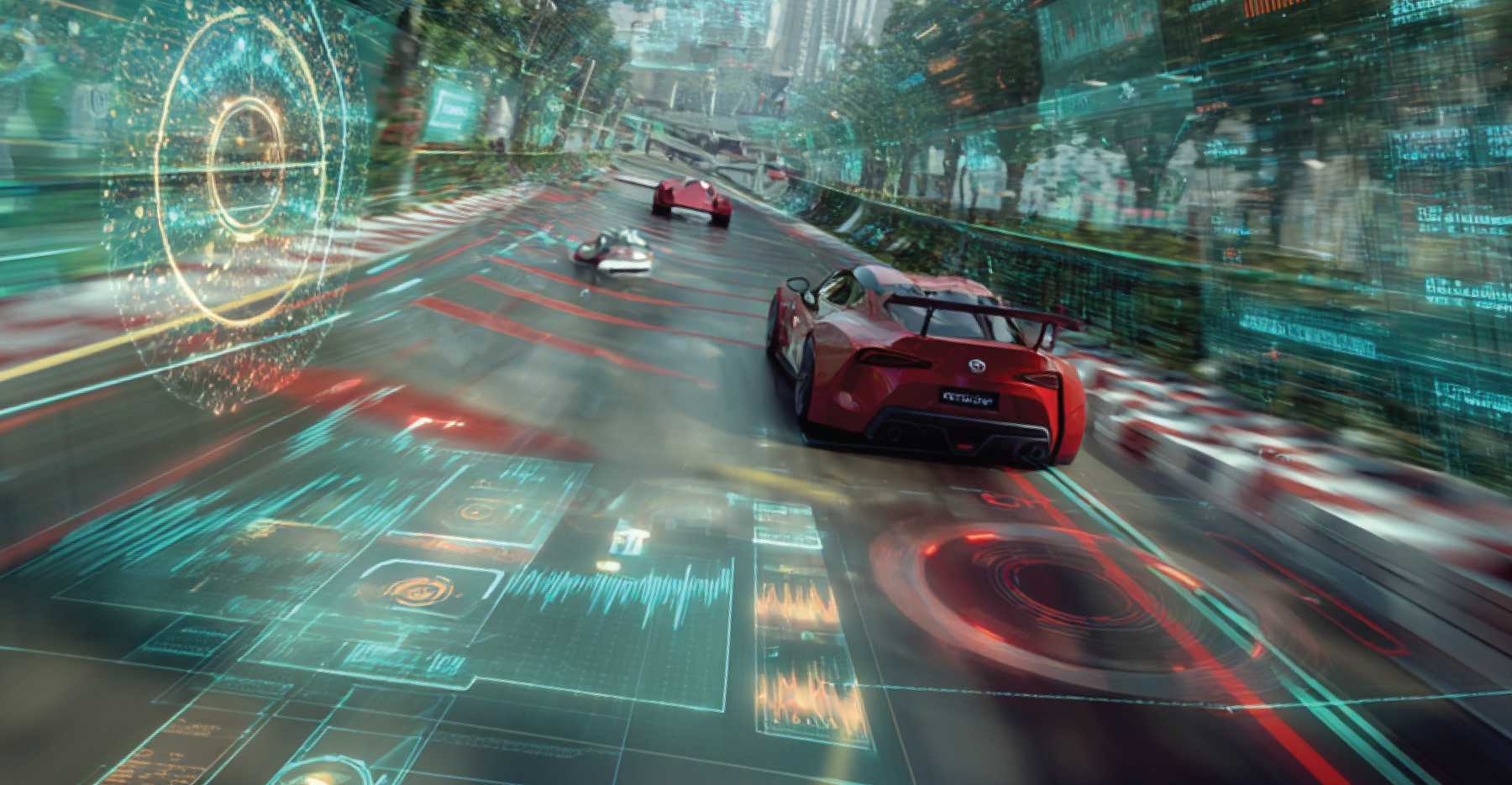
Finally, the digital twin becomes a product, a polished, living mirror of reality. It tracks that red Toyota across a city with pinpoint accuracy, syncing the physical and digital worlds in real time. This mirror doesn’t just reflect; it expands our view, showing what no human could see alone. It’s everywhere, monitoring a thousand intersections to ease congestion. It’s timeless, rewinding to reveal a near-miss from minutes ago or predicting a traffic jam, much like the foresight in Stanislaw Lem’s Futurological Congress, where imagined worlds feel eerily real. This is “fusion,” where data from cameras, sensors, and sounds blends into a multidimensional truth, like a child grown wiser than its parents.

This digital twin is a partner, not a replacement. It sees patterns we miss: a coordinated car theft operation quietly unfolding across scattered streets, a traffic bottleneck that only appears on Thursdays. This technology is now spreading globally, from Silicon Valley to Singapore, as engineers craft mirrors that see beyond human limits. It’s not just about reflecting reality but uncovering its hidden structures.
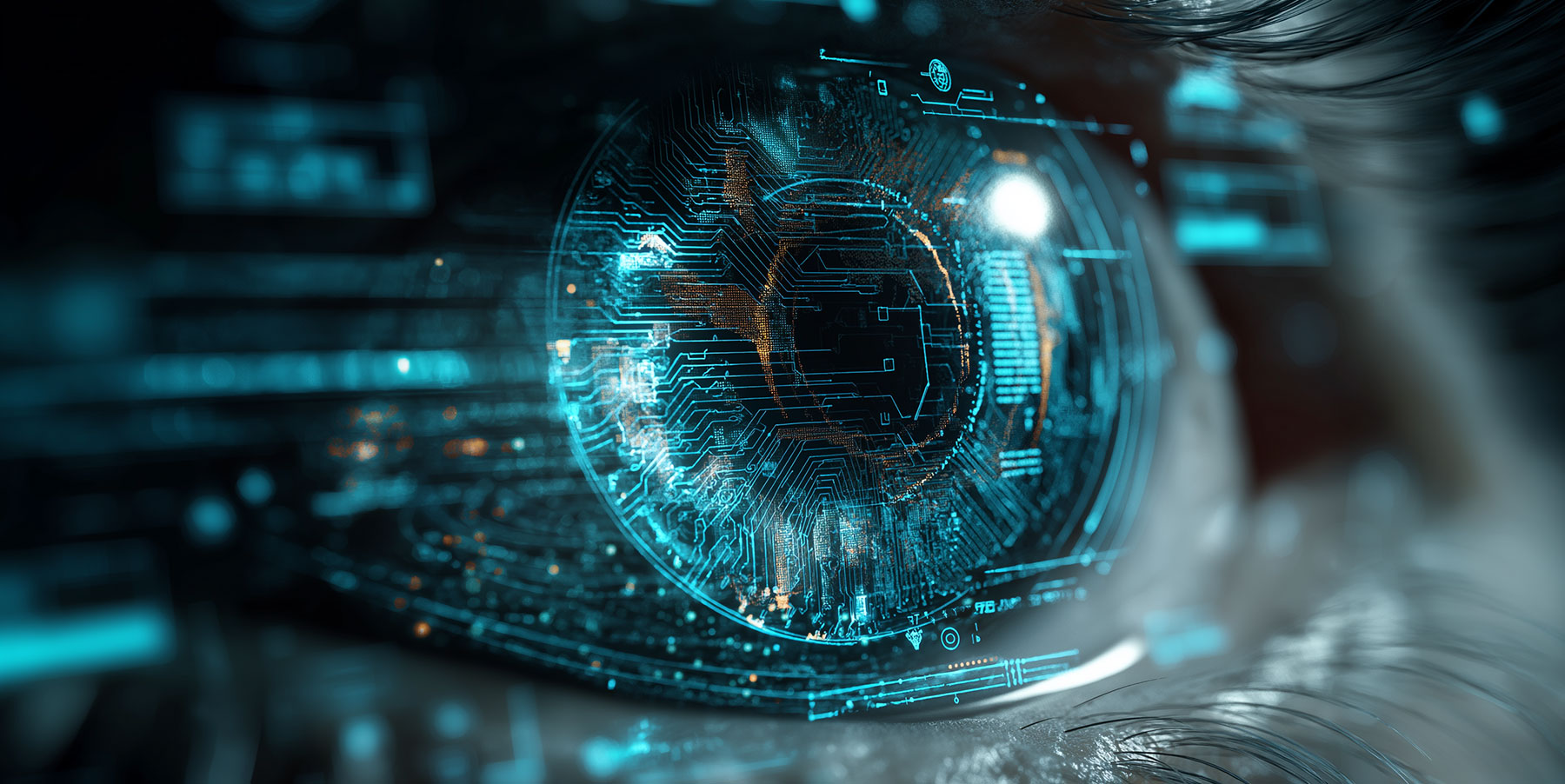
Why build digital twins? Because we humans are bound by the physical limits of our bodies and the narrow reach of our senses. We can’t watch every street, can’t hold a city’s worth of data in our minds, can’t see the past or predict the future with ease. A digital twin can. It’s a partner that amplifies our vision, letting us see the world through a lens both familiar and alien. From a single intersection to an entire city, it maps patterns too vast for us to grasp alone: traffic flows, supply chains, the pulse of a planet.
This journey, from cybernetic labs to today’s global tech hubs, is about more than technology. It’s about teaching machines to see like us, then letting them see more. We start with a myth, a dream of machines that understand. We play with toys, crude attempts to capture reality. We build models, teaching machines the world’s hidden rules. And we create products, living mirrors that reveal truths beyond our reach. In this mirror world, we’re not just building machines—we’re redefining how we see, how we understand, and how we dream.
